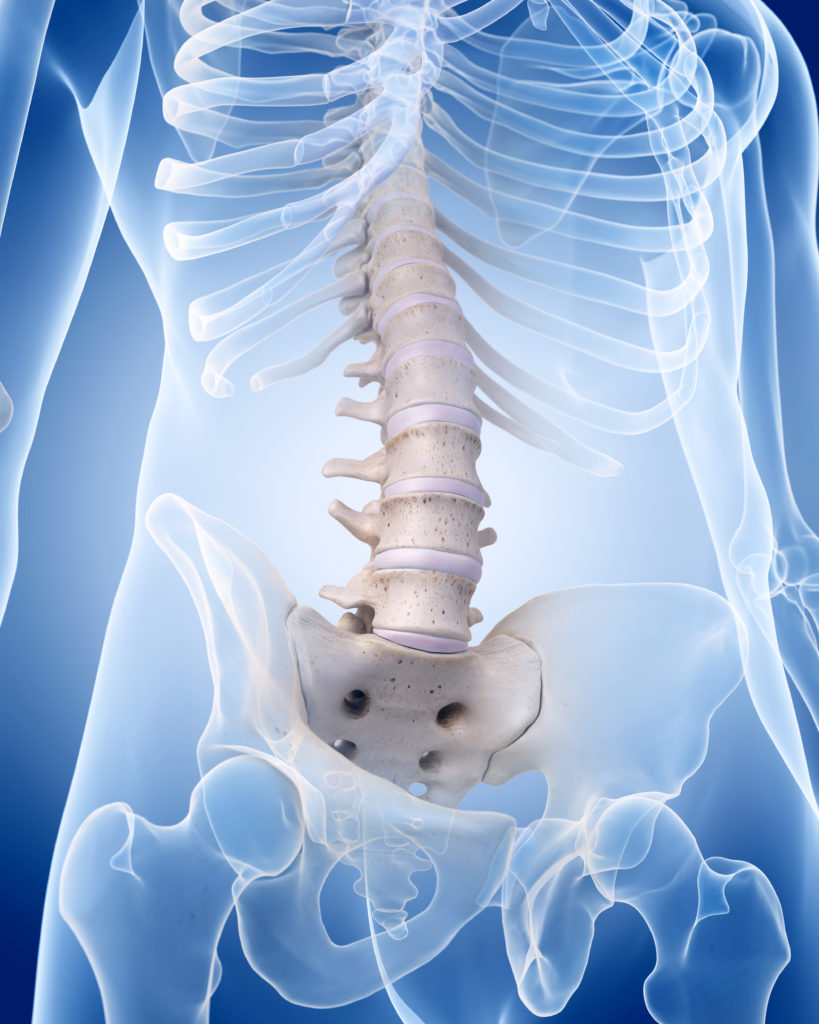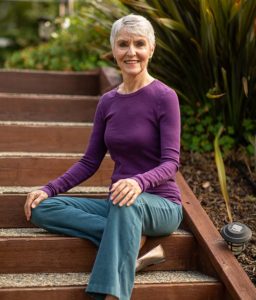Our spine is a bit of a mystery for each of us.
We have all “seen” skeletons of the spine, but it’s hard to understand how those bones actually fit inside of us.
How big a mystery?
I once brought a spine to an interview with on The View from the Bay, a local San Francisco TV program. But this spine had no pelvis or head attached. The interviewer picked up the spine and as he talked he held it upside-down. Of course, I had to set him straight but I was pretty sure that he wasn’t alone in his confusion.
There are many reasons we are in the dark about our spine.
It’s behind us and out of our visual range. We can’t see it, so we are unaware of what it looks like or any visual irregularities.
The spine is also buried inside of us. While we can feel our arm bones or leg bones we can’t palpate the vertebrae.
Also, the surrounding tissue around the spine has very few sensory nerves. Unlike our fingertips, the back muscles lack refined sensations.
So in general, the spine is hard to perceive, both its shape and its function.
What does a healthy spine look like?
Since the spine is so mysterious it’s hard to know what’s optimal. Below is an aligned, balanced spine that can guide us to a healthy spine.

Note the even indentation from the sacrum to the neck. This even indentation is possible because the vertebrae stack, like children’s building blocks. Yet, almost everyone has a curved spine which causes all types of distortions, as seen below.
This Spine has a swayback.

Note that there is a deep indentation under her swimsuit strap. Most of us call the indentation a “swayback” (lordosis). The indentation means that the vertebrae tip and cause uneven pressure on the discs. The swayback also requires the back muscles to be tight and tense.
The spine below demonstrates the opposite distortion.
When bones protrude they are described as a kyphosis.
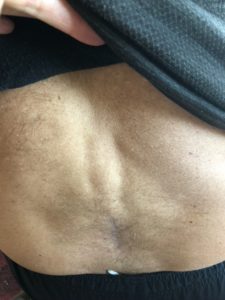
Bones that poke out are kyphotic and as dangerous as a swayback. The discs in this case also have uneven pressure on them. Excessive muscular work causes tension, stiffness, and fatigue.
All these distortions show what needs to change. Swaybacks need work in the abdominals. The protruding vertebrae, kyphosis, in the lower back, as shown in the photo above realigns by repositioning the pelvis.
You can learn to understand and reshape your spine.
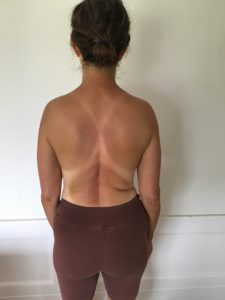
When you look at this spine note how deep the indentation is in the lower spine. There is no indentation where her tan marks crisscross. See also the deep crease at her right waist accompanying the tip of the torso to the right.
For her to heal her own spine she first has to understand where her spine indents.
She can do that by exploring her spine with the fingertips of one hand. The other hand is on the ribcage opposite the swayback. Once the pelvis aligns, she uses her abdominal muscles to press the ribs on the front of her body backward. By doing this she moves the vertebra back to align the vertebra, making a column.
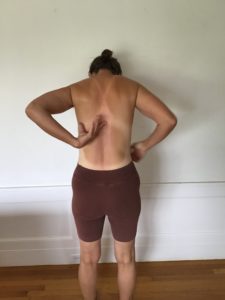
As the vertebrae begin to realign notice how the entire spine lengthens. The muscles surrounding the spine release their tension and relieve chronic tensions.
Everyone can learn about their own spine and how to reshape it.
Come to class on Friday, May 20, at noon PT to reshape and strengthen your spine.

